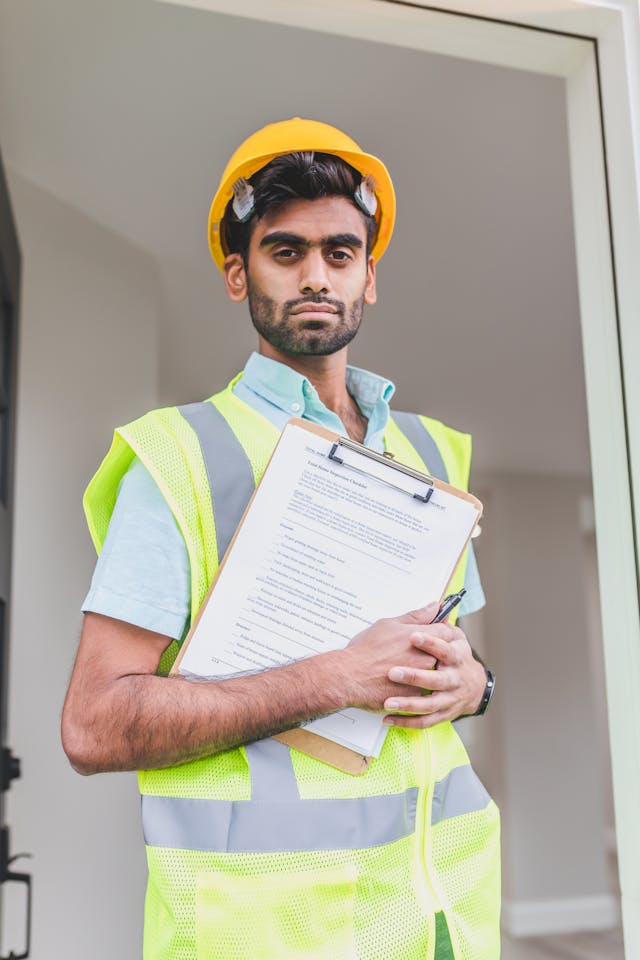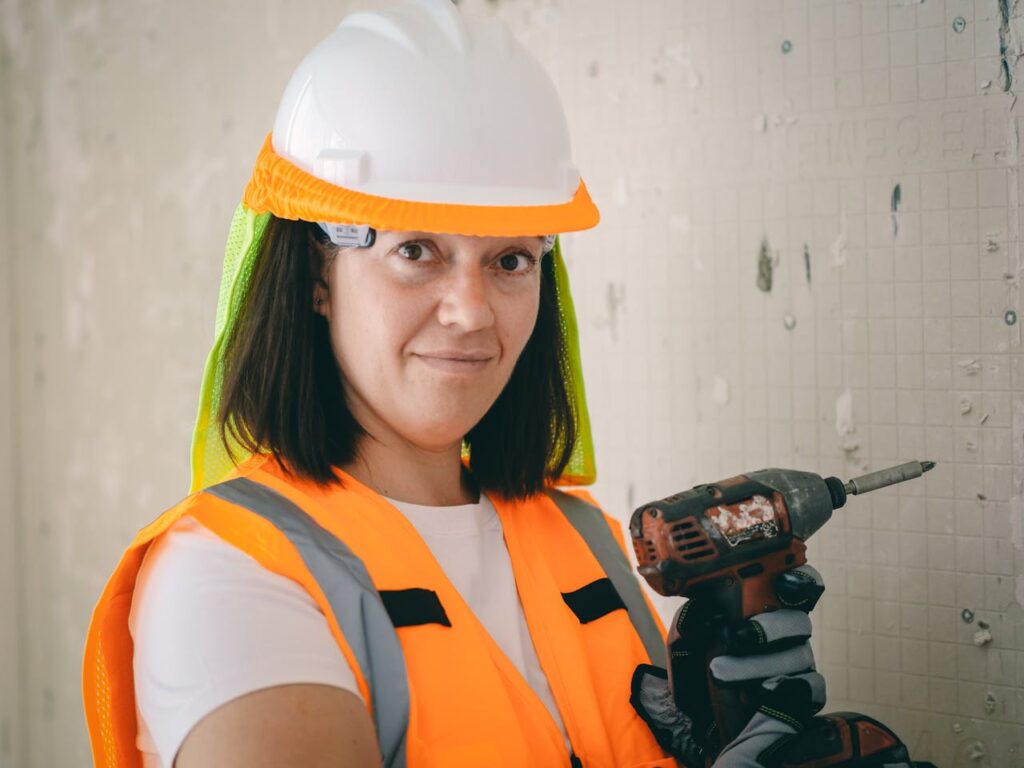YTC Ventures | Technocrat’ Magazine – The values are for US Markets
29th Oct 2025
The construction industry is inherently hazardous, with risks ranging from falling objects and heavy machinery to chemical exposure and high noise levels. Personal Protective Equipment (PPE) serves as a critical last line of defense, mandated by regulations like OSHA’s standards (29 CFR 1926.95) to minimize injuries and fatalities.
This analysis explores PPE usage in construction, the business models of suppliers, branding implications, key suppliers in Bangalore (a major Indian construction hub), design strategies for civil companies, a brand evaluation, costs, and PPE’s share of total project expenses.
PPE Commonly Used in the Construction Industry
Construction sites demand tailored PPE based on hazard assessments, as per OSHA guidelines.
Employers must provide, maintain, and train workers on PPE that fits properly— a rule effective January 13, 2025, aligning construction with general industry standards. Below is a table summarizing key PPE types, their purposes, and examples:
| PPE Category | Purpose | Examples | OSHA/ANSI Compliance Notes |
|---|---|---|---|
| Head Protection | Shields against falling objects, impacts, and electrical hazards. | Hard hats (Type I/II with chinstraps). | ANSI Z89.1; Type II recommended for falls. |
| Eye & Face Protection | Protects from flying debris, dust, chemicals, and welding sparks. | Safety glasses, goggles, face shields. | ANSI Z87.1; anti-fog and side shields required. |
| Hearing Protection | Reduces noise-induced hearing loss from machinery and traffic. | Earplugs, earmuffs (clip-on for hard hats). | OSHA 29 CFR 1910.95; NRR rating ≥25 dB. |
| Respiratory Protection | Guards against dust, fumes, silica, and chemicals. | Respirators, masks (N95 or higher). | OSHA 29 CFR 1910.134; fit-tested annually. |
| Hand & Arm Protection | Prevents cuts, abrasions, punctures, and chemical burns. | Gloves (cut-resistant, chemical-resistant). | ANSI/ISEA 105; task-specific selection. |
| Foot & Leg Protection | Shields from punctures, impacts, slips, and electrical hazards. | Steel-toe boots, metatarsal guards. | ASTM F2413; slip-resistant soles. |
| Body Protection | Covers against fire, chemicals, and weather; enhances visibility. | High-visibility vests, coveralls, FR clothing. | ANSI/ISEA 107; Class 2/3 for traffic areas. |
| Fall Protection | Prevents falls from heights (leading cause of construction fatalities). | Harnesses, lanyards, guardrails. | OSHA 29 CFR 1926.501; full-body harnesses. |
These items must be inspected regularly, replaced when damaged, and provided free by employers (except for non-specialized items like weather gear). Non-compliance can lead to fines averaging $60,000 per HSE prosecution case.

Business Model of PPE Suppliers in Construction
PPE suppliers operate primarily on a B2B (business-to-business) model, targeting construction firms, contractors, and distributors. Key elements include:
- Supply Chain and Sourcing: Manufacturers source raw materials (e.g., Kevlar for gloves, Tyvek for coveralls) globally, with production in hubs like China, India, and the UAE. Distributors like those in Bangalore handle local logistics, offering bulk procurement to reduce costs.
- Revenue Streams:
- Direct sales (e.g., bulk kits to sites).
- Customization (branding/logos on vests).
- Subscription/recurring models (e.g., PPE kit delivery apps for restocking, post-COVID trend).
- Value-Added Services: Training, maintenance, and compliance audits.
- Market Dynamics: The global PPE market was $43.9 billion in 2018, projected to reach $93.5 billion by 2026 (10% CAGR), driven by regulations and post-pandemic demand. In construction, suppliers differentiate via innovation (e.g., smart PPE with IoT sensors) and sustainability (recyclable materials). Challenges include commoditization and pricing pressures, countered by freemium apps for data-driven personalization.
- Profitability: Margins are 20-40%, with organized players (e.g., 3M) dominating via scale. Unorganized suppliers focus on low-cost local markets but face quality scrutiny.
This model emphasizes compliance (CE/ISO certifications) and partnerships with firms like DuPont for specialized gear.
Impact of PPE on Construction Brand
PPE profoundly shapes a construction company’s brand by signaling commitment to safety, ethics, and professionalism. Positive impacts include:
- Reputation Enhancement: Companies prioritizing fitted, high-quality PPE (e.g., gender-specific designs) build trust, attracting talent and clients. A 2023 UK report notes that safety-focused firms see 80% higher brand recognition via uniform visuals. uvex-safety.com Non-compliance risks reputational damage—e.g., branded waste PPE in landfills can lead to negative publicity if misused.
- Employee Loyalty and Productivity: Proper PPE reduces injuries (e.g., 67% of women report frustration with ill-fitting gear), boosting morale and retention. It fosters a “safety-first” culture, cutting downtime from accidents.
- Client and Regulatory Appeal: Bidding on projects often requires PPE audits; strong safety records lower insurance premiums and win ESG-focused contracts.
Conversely, skimping on PPE can erode brand equity through lawsuits (e.g., up to £344,640 for paralysis claims) or bans. Brands like ARX (women-focused PPE) exemplify how innovation elevates image.
Top PPE Suppliers in Bangalore
Bangalore, a booming construction epicenter, hosts diverse suppliers blending global brands with local manufacturing. Based on market presence, inventory, and reviews, here are the top five:
| Supplier | Key Offerings | Location/Notes | Contact/Website |
|---|---|---|---|
| B.E Civil Sustainable Supply & Services of Civil / Construction Industry | Full PPE range, power tools, safety vests, gloves. Brands: Karam, 3M. | Thannisandra , Bengaluru | ytcventures.com/becivil |
| Bangalore Industrial Aids | Head/eye/foot protection, fall gear since 1985. Training services. | Near Kempegowda Airport; Repair/maintenance. | bangaloreindustrialaids.com |
| R.F.I Creations | PPE kits (coveralls, masks, shields), custom medical-grade. | R.T. Nagar; Hospital/construction hybrid. | rficreations.com |
| Plasti Surge Industries | Disposable kits, gloves, shoe covers; export-quality. | Whitefield; Bulk/custom orders. | psidispo.com |
| Mallcom India | Helmets, FR clothing, gloves; ISO-certified. | Multiple outlets; UAE/India network. | mallcom.in |
These suppliers emphasize CE/ANSI compliance and offer delivery within 1-7 days. For civil projects, prioritize those with fall protection expertise.
Brand Design for Civil Companies by PPE
PPE branding for civil construction firms integrates safety with corporate identity, turning gear into a mobile billboard.
B.E CIVIL Strategies include:
- Customization Options: Embroider logos on vests/hard hats, use reflective heat transfers for hi-vis jackets, or laser-etch helmets. Colors align with CI (e.g., company blue on yellow vests for 80% recognition boost). uvex-safety.com
- Design Principles: Prioritize visibility (ANSI Class 2/3), comfort (breathable fabrics), and inclusivity (women’s fits). For civil sites (e.g., bridges/roads), add weather-resistant layers.
- Implementation: Suppliers like Essential Workwear offer bulk branding; costs add 10-20% to base price. Benefits: Uniform teams project professionalism, deterring unauthorized access and enhancing site security.
This “branded safety” approach, via providers like Associated Scaffolding, ensures PPE doubles as marketing.

Brand Analysis of PPE in the Construction Industry
PPE brands in construction blend functionality with innovation, but face commoditization. Key players:
- 3M: Market leader (global share ~15%); strengths in respiratory/eye gear. Brand equity: Innovation (e.g., smart filters), trust via OSHA ties. Weakness: Premium pricing alienates small firms. SWOT: Strong R&D (10% revenue invested), but supply chain vulnerabilities.
- DuPont (Tyvek/Nomex): Premium chemical/FR specialist; excels in durability. Positioning: “Unparalleled protection” for high-risk civil work. Growth: Sustainability focus (recyclable lines). Challenge: Higher costs limit mass adoption.
- Karam: India-dominant (top fall protection); affordable, localized. Brand perception: Reliable for emerging markets. Opportunity: IoT integration for “smart PPE.”
- Honeywell/Mallcom: Balanced mid-tier; strong in gloves/footwear. Analysis: High compliance (ISO/CE), but less innovative than 3M.
Overall, the sector values fit/comfort (post-2025 OSHA rule), with women-specific brands like ARX gaining traction (55% market response). Future: Smart PPE (sensors for real-time monitoring) could disrupt, per Safety 4.0 trends. Brands succeeding emphasize ROI: Reduced injuries save $1B/week in U.S. workers’ comp.
Cost of PPE in Construction and Percentage of Total Cost (Numbers for Western Markets)
PPE costs vary by project scale, but employers bear nearly all (OSHA mandates free provision). Typical per-worker annual costs:
| Item | Unit Cost (USD) | Annual Replacement (per worker) | Notes |
|---|---|---|---|
| Hard Hat | $20-50 | 1-2 | Impact-tested. |
| Safety Glasses | $5-15 | 2-4 | Anti-fog. |
| Gloves | $10-30/pair | 10-20 pairs | Task-specific. |
| Hi-Vis Vest | $10-25 | 2-4 | Washable. |
| Boots | $50-150 | 1 pair/year | Steel-toe. |
| Fall Harness | $100-200 | 1 (inspect annually) | Full-body. |
| Total per Worker | $300-800 | Excludes training ($200/session). |
For a 50-worker site: $15,000-40,000/year. PPE comprises 1-2% of total construction costs (e.g., 1.9% in Istanbul studies; 0.8-1.7% for Indian roads/bridges; 2-4.5% in Spanish models).
This low share yields high ROI: Injuries cost $171B/year globally, vs. PPE’s preventive savings.In summary, PPE is indispensable for safety and branding in construction. Investing modestly (1-2% of budget) yields exponential returns in reduced risks and enhanced reputation.
For Bangalore-specific procurement, consult local suppliers for tailored solutions.
Send e-mail to becivil@ytcventures.com or Whats app “PPE” to +91-9380376419

Comments